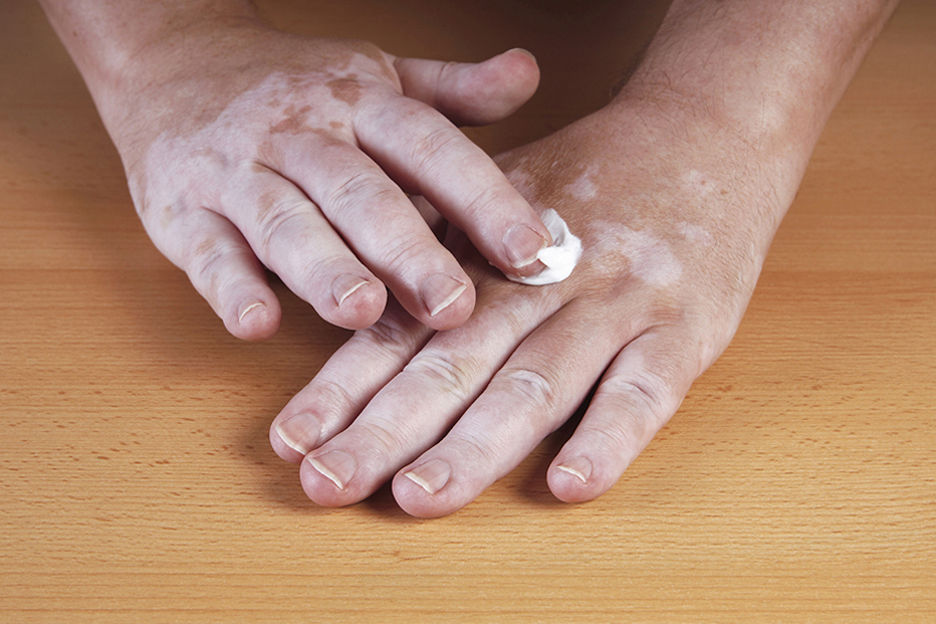Vitiligo affects an average of ten in one thousand people, regardless of gender or skin colour. The skin disease is believed to be hereditary. While it is neither painful nor contagious, it can have psychological repercussions.

What is vitiligo?
Vitiligo is a disease that causes skin discoloration in several areas of the body. Vitiligo affects both men and women, and often develops before the age of 20. Vitiligo is characterized by a complete depigmentation of the skin that leads to the appearance of white patches, mainly on the face, neck, hands, legs and feet. The disease is believed to be hereditary. Other factors are known triggers of vitiligo, such as:
- exposure to the sun or sunburn;
- emotional stress or psychological trauma;
- exposure to chemical substances;
- certain diseases.
However, the exact mechanisms of how this disease develops are still unknown to this day.
How can I find out if I have vitiligo?
A vitiligo diagnosis is most often given by a doctor after a simple skin examination. There is rarely a need to do a biopsy, but blood tests can sometimes be required to make sure that the symptoms are not caused by any other auto-immune disease.
Note that people who are affected by vitiligo generally don’t have any other symptoms aside from white patches; they do not experience pain, itchiness or discomfort.
Can it be cured?
Vitiligo cannot be cured; it is a chronic condition that lasts throughout one’s life. However, there are several treatments available to limit the size and quantity of depigmentation patches. Consult your pharmacist or doctor to determine which measures might be appropriate for you.
A few useful tips
Here are a few tips to avoid the propagation or appearance of white patches on your skin:
- Avoid exposure to the sun and tanning booths.
- Use appropriate sunscreen (SPF 30 and over) when you go out into the sun. In addition to reducing the appearance of patches, proper sun protection is important to limit the sun’s harmful effects (ex: skin cancer). Note that white patches are low in melanin and therefore more sensitive to ultraviolet rays.
- Don’t forget that vitiligo is not a contagious disease, so you don’t have to limit contacts.
- Learn to better manage stress, which can trigger the appearance of white patches on the skin. Proper stress management is an excellent strategy to adopt.
- You can use make-up to camouflage any white spots that bother you.
Although vitiligo does not pose a risk to your health or that of your loved ones, the appearance of depigmented areas can cause psychological distress and a decrease in quality of life. If this is the case, consider seeking psychological help. Psychotherapy could be useful to help you learn how to better manage this condition.
If your skin is affected by vitiligo, there is no need to worry; the disease does not present any risk for your health or that of your loved ones. Keep in mind that our imperfections are what make us unique!
